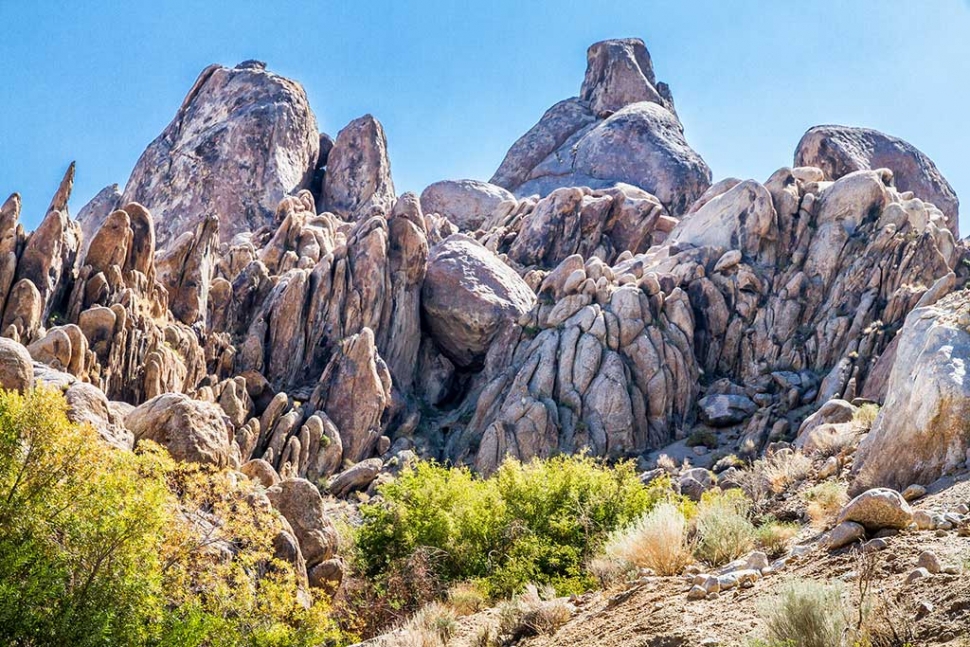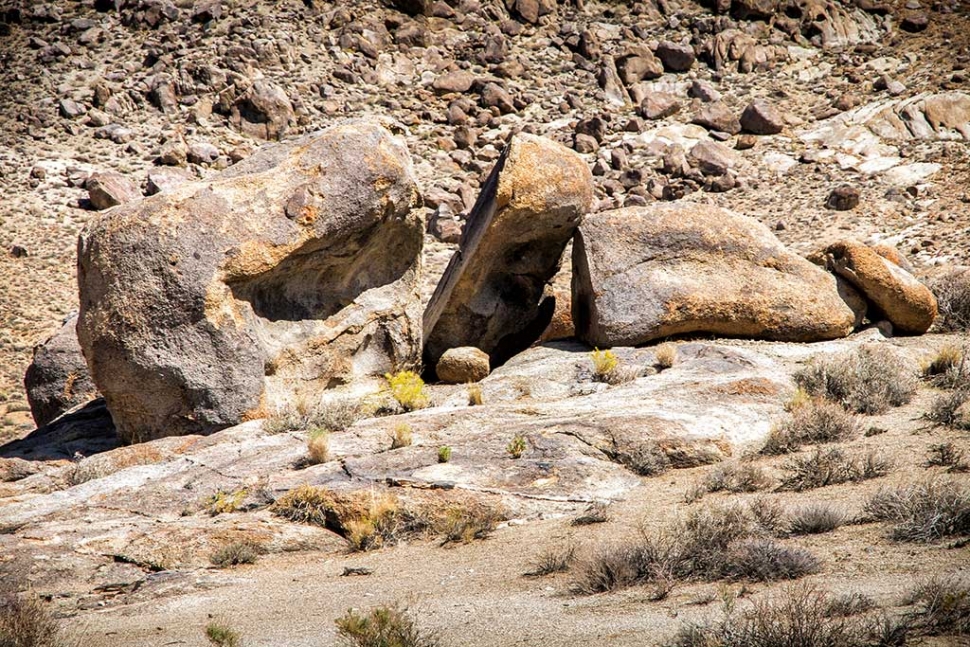|
Photography Know-How
 Photo of the Week by Bob Crum. "Getting lost in the Alabama Hills" Photo data: ISO 320, Canon 15-85 lens @32mm, f/11, 1/350 seconds. By Bob Crum — Wednesday, June 7th, 2017
NIK software alert!
         In the old days, centuries ago, no sooner had we shot a roll of film than we excitedly put it in the developer tank. Afterward we eagerly put the film in the enlarger to expose photo paper. Holding our breath (sometimes because of the developer fumes), we slid the exposed photo paper into the developer. Than the fixer. Always a thrill to see the image slowly appear. Digital photography drastically changed all that. No more stinky chemicals that would make my hair kinky, ears wiggle and toes curl. The workflow has also changed tremendously and now much easier to be creative. Most of today's digital cameras produce both jpegs and RAW files. Jpegs are RAW files processed by the camera's computer and compressed... in the process discarding a large percentage of image data. Jpegs at 72ppi (pixels per inch) are fine for the Internet but limit editing possibilities. Note that what the camera discards you can't enhance afterward. Conversely, a RAW file is data direct from the sensor unmanipulated by the camera's computer. As such, a RAW file is not an image until it's processed. Many programs are available to convert a RAW file such as Camera Raw in Photoshop (PS) & Lightroom (LR). Photoshop is a powerful editing program but I seldom use it. I don't have time nor need to do masking, play with multiple layers, or 'liquify' anything... except gold bullion now and then. Deadlines loom large! I need a fast, yet effective RAW file converting/editing workflow. On assignment, there are no do overs. It's get the shot or cry. As I run and gun there's no time to adjust camera settings for perfect exposure. Using a RAW image file, as long as the exposure is reasonably good, I can make reasonable corrections using LR. A distinctive advantage of LR is that it's a non-destructive processor/editor. It does not affect pixels directly. It simply edits the file tags. Click the reset button at any time and I'm back to the original file to work on anew. After LR, I export the processed file as a tiff image to Adobe Photoshop Elements. Elements is a great baby PS program which is arguably the most underrated program on the market IMO. More importantly, within Elements I have NIK plugins. NIK plugins are a photojournalists salvation by providing an easy and powerful range of photo editing capabilities. About 5 years ago, Google bought NIK. However, Google just announced that they are no longer going to support NIK. This means no upgrades going forward.Hence the alert. One wonders why Google would abandon such a Godsend to a gazillion photographers... enthusiasts and pros alike? If you have a modicum of interest in photography and don't have NIK, I encourage you to go and download the FREE Collection and burn it onto two CDs or hard drives. Learn it, use it, and you will love it! The plugins are at https://www.google.com/nikcollection/ Note some limitations. Google claims NIK will only run on Windows Vista, 7 and 8. No mention that it will run on 10 but not sure why not. I'm still happily running Windows 7 Pro. Also, NIK will not run in PS Elements above 13 which is why I'm using them in Elements 11. MAC users, OS X 10.7.5 through 10.10 is OK. Note that both Lightroom 6 and Photoshop Elements do not require an Adobe monthly subscription. Both are available as standalone programs. Look on eBay. BTW, send me an email if you're interested in a photo editing workflow workshop? Happy photoing. Email questions, comments, suggestions to bob@fillmoregazette.com |
